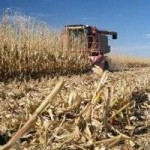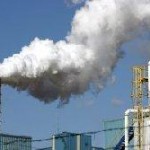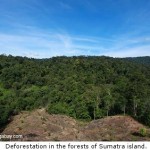
Introduction
The rural population of India exhibits unique resource optimization capabilities as compared to urban population. Tracts of land are cultivated and cattle are reared and the produce is either consumed of sold off in the market. The wastes generated from crop cultivation and rearing animals are also utilised domestically. While the dung of animals is converted to dung cakes and used as fuel in inefficient cooking stoves (chulhas) and domestic heating in winters, the crop residues are usually burnt off so as to reduce the costs involved in storage, handling, etc These activities are wasteful, uneconomical and bear a huge impact on the health of people who come in direct contact. It also leads to air pollution problem.
The opportunity cost of this resource is not met by such a wasteful activity. However, it is possible to transform this waste into a valuable resource by making use of modern energy conversion technologies. The next few paragraphs analyse the costs, benefits and constraints associated with anaerobic digestion, a green technology for conversion of organic wastes into biogas and nutrient rich compost.
The Problem
Every year, several large and small farmers in major agricultural states of India burn the crop residues after harvesting. During April and May, wheat crop stubble is burned after harvesting whereas rice crop stubble burning is performed during October and November. The residue to crop ratio (kg per ton of waste) for wheat and rice are 1.47 and 1.86 respectively. (Pallav Purohit, 2006)
This crop residue burning leads to the release of several atmospheric pollutants such as aerosols, suspended particulates, SOx and NOx, and in some cases, dioxins and furans. Further, burning of the standing crop also leads to volatilization of the soil nutrients, decreasing soil fertility.
Dung cakes are extremely popular for cooking purposes in rural India. Burning of dung cakes leads to toxic emissions in the form of SPMs, PAHs and CO. Studies relate cow dung cake burning with cases of tuberculosis, lung cancer etc. (J. B Kandpal, 1995)
Thus, the external costs (environmental damage, soil damage, health damage) associated with the traditional methods are enormous.
Potential Solution – Anaerobic Digestion
The risks associated with the problem indicate long-term losses in terms of health, environmental loss and degradation of land. There is an urgent need to switch over to greener solutions. Anaerobic digestion has the potential to meet the energy requirements of rural India, and also counter the effects of reckless burning of biomass resources.
There are two basic designs of biogas plant that are popular in India. These are:
- Floating Drum type
- Fixed Dome type

In Indian context, the Deenbandhu Model is the most economical anaerobic digester. It was developed by Action for Food Production (AFPRO), New Delhi, India, in 1984 (Sooch, 2004). This model is designed on the basis of the principal of minimization of the surface area of a biogas plant to reduce its installation cost without sacrificing the functional efficiency. The design consists of two concrete spheres of different diameters, joined at their bases. The structure, thus, formed acts as the digester or fermentation chamber, as well as the gas storage chamber. The digester is connected with the inlet pipe (coming from slurry mixing tank) and outlet tank (for collection of digested slurry).















